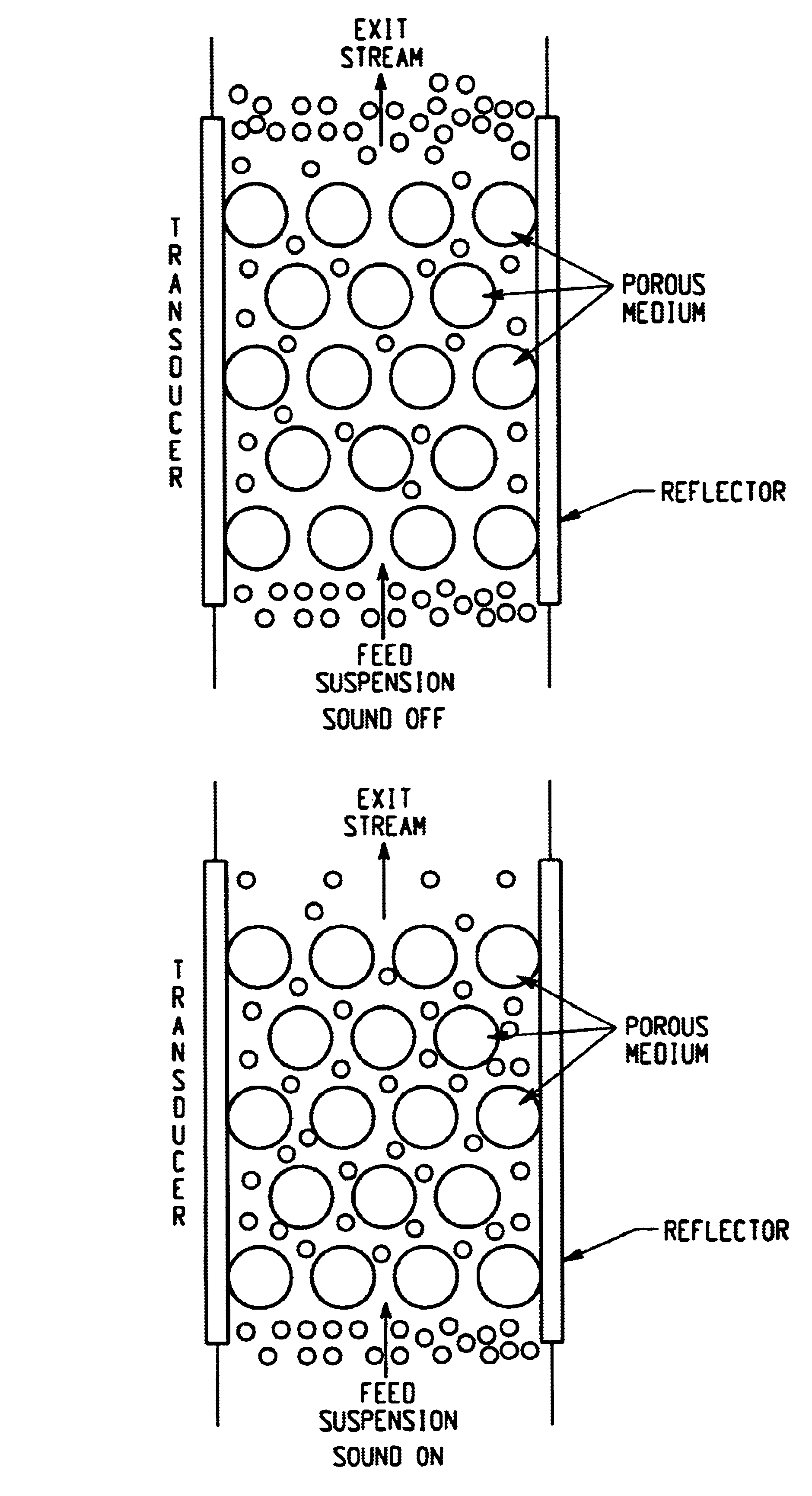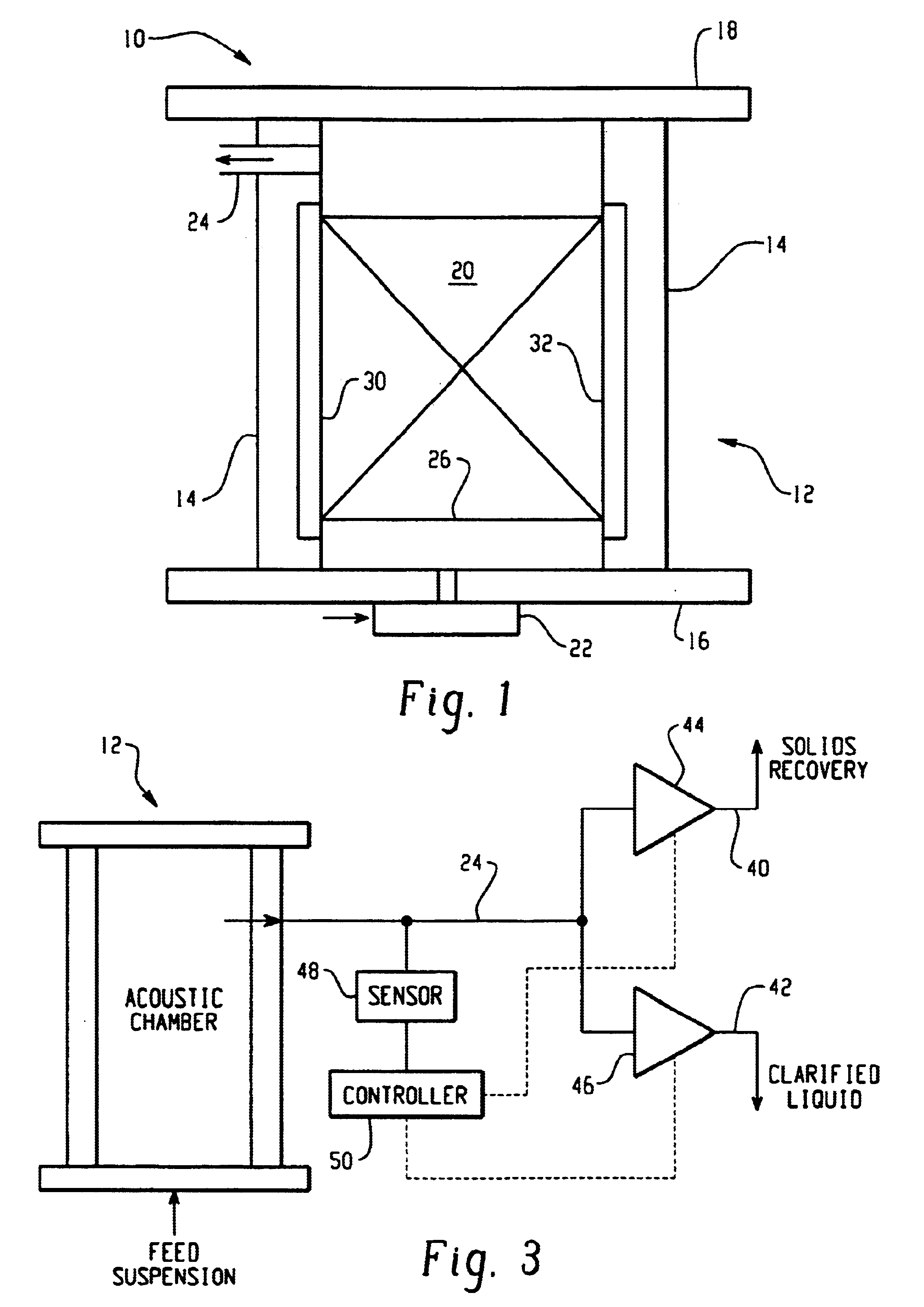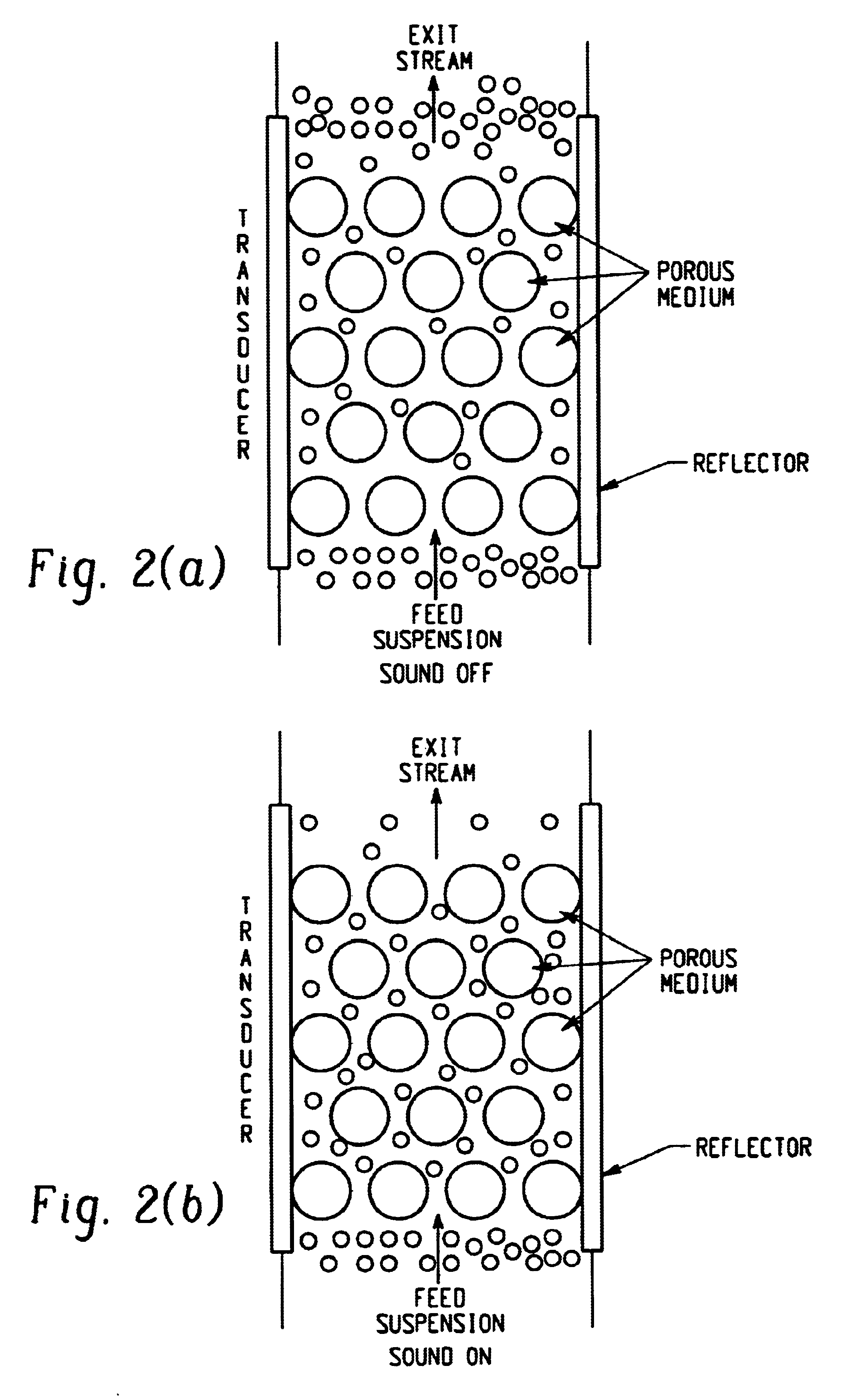Method and apparatus for acoustically driven media filtration
a technology of acoustically driven media and filtration method, which is applied in the direction of sedimentation settling tank, auxillary pretreatment, separation process, etc., can solve the problems of slow processing rate, high pressure drop, and difficult filtration of fine solid particles, and achieve easy removal and easy collection of particles.
- Summary
- Abstract
- Description
- Claims
- Application Information
AI Technical Summary
Benefits of technology
Problems solved by technology
Method used
Image
Examples
example 1
FIG. 5(a) is a graph showing the variation of particle concentration in the exit stream as a function of time for an experiment involving 0.3 wt % suspension fed at 35 cm.sup.3 / min to the chamber with the transducer operated with 20 W of power. This experiment used the unconsolidated glass beads as the porous medium. In Segment I, the effluent concentration reached a minimum within 1 minute of acoustically energizing the flow field. Thereafter, as the porous medium became saturated, the effluent concentration rose, reaching the original particle concentration after about 9 minutes, indicating the state of full saturation. When clear water was fed in Segment II, the concentration of particles in the effluent dropped over the course of 3 to 4 minutes, but the concentration did not drop to zero. This indicated a continuing leakage of solids from the porous media due to hydrodynamic entrainment. Upon deactivating the field in Segment III, a rapid release of the particles from the chamb...
example 2
The effect of suspension flow rate is shown in FIG. 6 for a 0.3 wt % feed concentration through the glass-bead medium and with the transducer operated at 20 W. As the suspension flow rate was increased from 30 to 45 cm.sup.3 / min, the residence time of the suspension in the porous medium decreased, and therefore one expected to see a decrease in filtration efficiency. FIG. 6 shows that the filtration efficiency was unaffected by the flow rate during initial period, but the time at which the percentage retention reached its peak value and the value of maximum retention decreased with increasing flow rate. The percentage retention for higher flow rates were consistently below those for lower flow rate for the whole duration of Segments I and II.
example 3
The effect of feed concentration is shown in FIG. 7. For this set of experiments, also using the glass-bead porous medium, the flow rate was fixed at 35 cm.sup.3 / min, electrical power was 20 W, and feed concentrations of 0.3, 0.4 and 0.5 wt % were used. In Segment I, there was very little variation in percentage retention for the various feed concentrations. Small differences are seen in Segment II, and these differences can probably be attributed to experimental error. These observations indicate that the filtration is not limited by filling of the available pore volume, at least for the range of feed concentrations tested.
PUM
| Property | Measurement | Unit |
|---|---|---|
| diameter | aaaaa | aaaaa |
| resonance frequency | aaaaa | aaaaa |
| diameter | aaaaa | aaaaa |
Abstract
Description
Claims
Application Information
 Login to View More
Login to View More - R&D
- Intellectual Property
- Life Sciences
- Materials
- Tech Scout
- Unparalleled Data Quality
- Higher Quality Content
- 60% Fewer Hallucinations
Browse by: Latest US Patents, China's latest patents, Technical Efficacy Thesaurus, Application Domain, Technology Topic, Popular Technical Reports.
© 2025 PatSnap. All rights reserved.Legal|Privacy policy|Modern Slavery Act Transparency Statement|Sitemap|About US| Contact US: help@patsnap.com



